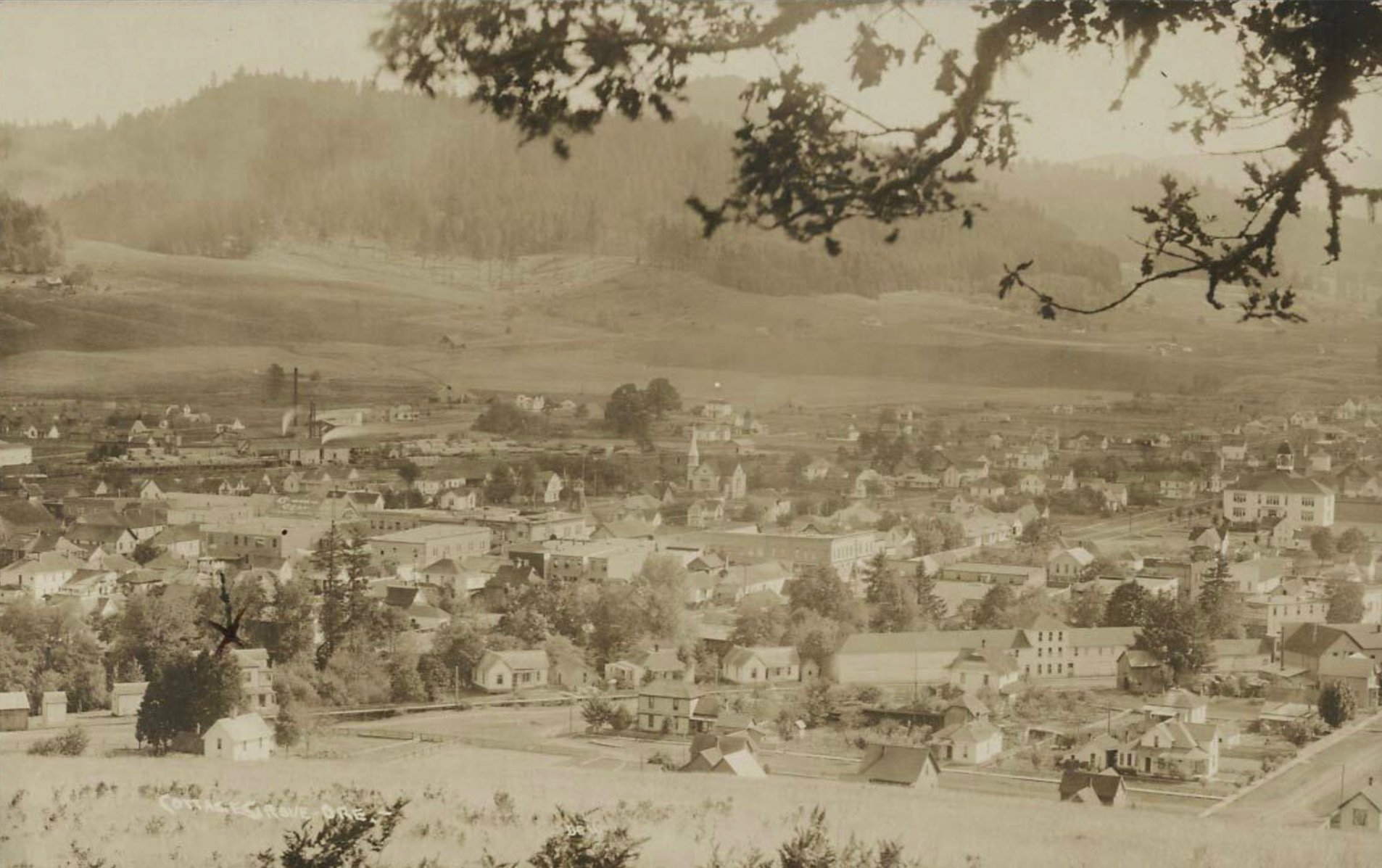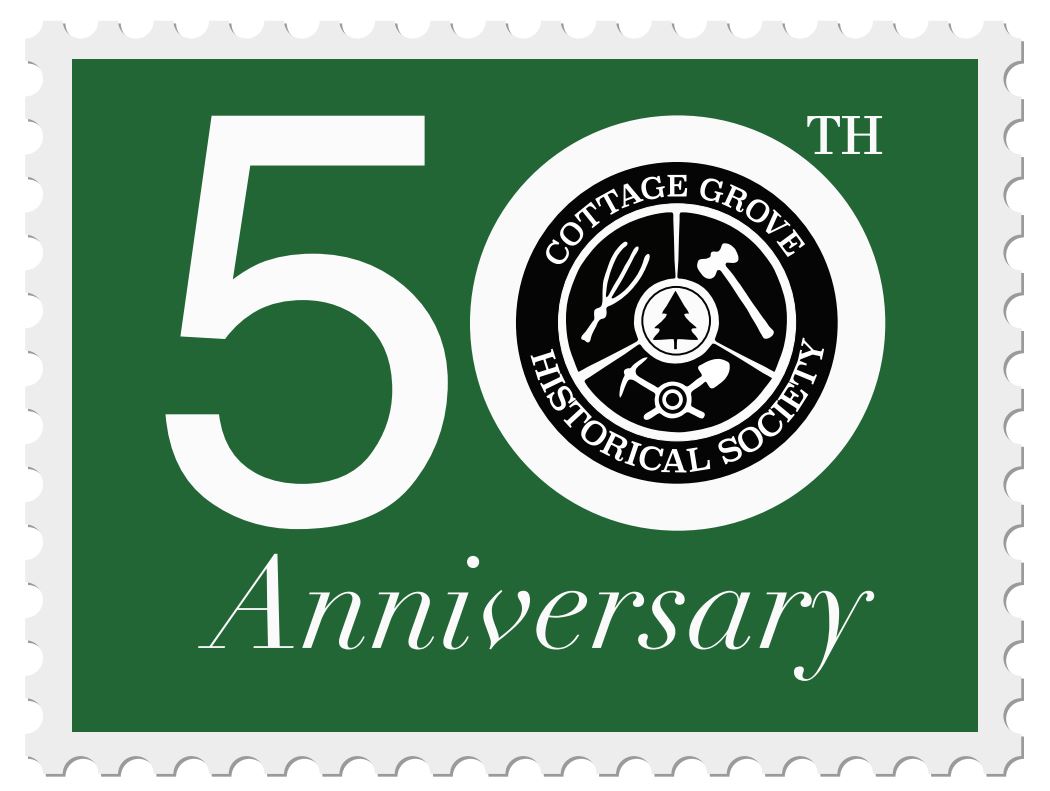A History of Early Cottage Grove adapted from Golden Was the Past
Greenbery C. Pearce and his little cottage built in an oak grove made a name for themselves. The year was 1855, and the location was just a bit east of where the town of Creswell is located today. The “population-explosion” of migrant-settlers created the need for a post office south of Eugene. One of these settlers, Mr. Pearce, was appointed Postmaster. Since the post office was located in his home, it is easy to see how the name they made for themselves was Cottage Grove. First moved away from its original site in 1858, the Cottage Grove Post Office has been relocated at least seventeen times before being permanently housed in its present location.
Pearce’s successor, Stephen Martin, moved the post office to his home about 5 miles south of Creswell when he was appointed postmaster. The third postmaster, Anderson Hamilton, housed the office in the lower floor of a two-story frame building which served as a country store near Walker.
And so it went. Whoever happened to be appointed the postmaster (by no means a full-time occupation) simply moved the post office to his home or place of business. The mail was brought to Cottage Grove by the stage service and then later by railroad. Sam Veatch, former postmaster, and long-time postal employee, remembered that as many as five dispatches were sent and received by train each day.
The city where it exists today had its humble beginnings on the old Henry Small claim on the west side of the Coast Fork. Henry built a log cabin on what is now South River Rd. A small one-room log schoolhouse was built in 1853. Church services and other community functions were also held in the little building by candlelight. A grist mill was constructed and a water wheel was installed in the creek near the junction of Silk Creek and the Coast Fork where the Old Mill Feed Store is today. This was a huge boon to the settlers as it saved them a 2 week trip to the nearest Mill in Oregon City.

As more settlers moved in a crude bridge was built across the Coast Fork. The new residents graduated from log cabins and began to build proper houses along River Rd. A livery stable and blacksmith shop and a few small businesses began to operate. Mrs. Adams opened up a millinery shop to serve the ladies and Darwin Bristow and Herbert Eakin build a General Store just south of the mill. Bristow and Eakin cashed the settlers’ checks and began to keep people’s money in the safe in the store. Grant, a spaniel dog named for General Grant, served as the night watchman. That was the humble beginning of the First National Bank.
A rutted wagon road ran alongside the Coast Fork. This was lined with wood slabs from the early lumber mills and served as a main street. The little town took on the name Slabtown. In one of our next mini-lessons we will learn about how two settlements, Slabtown and Lemati on the other side of the river, duked it out to become one town, the Cottage Grove that we know and love today.
